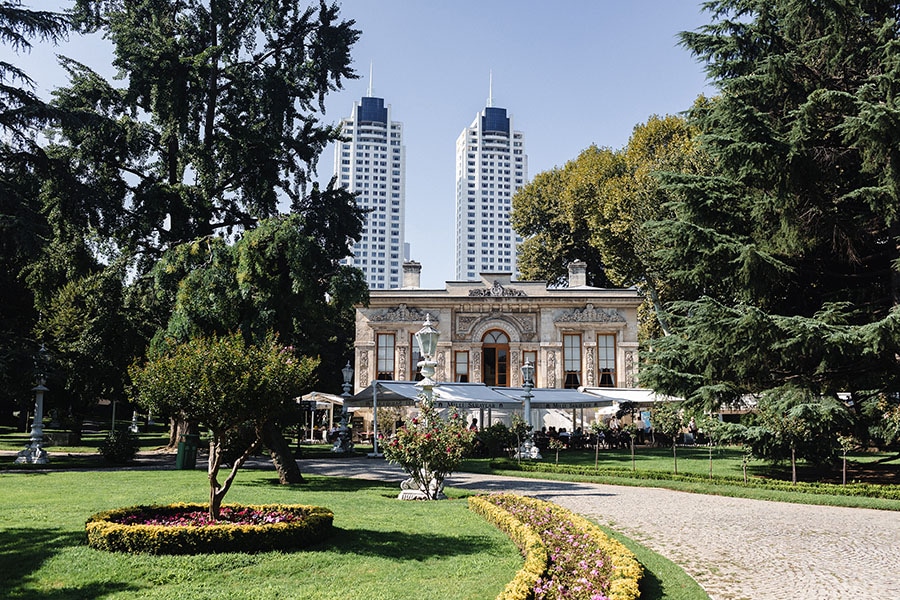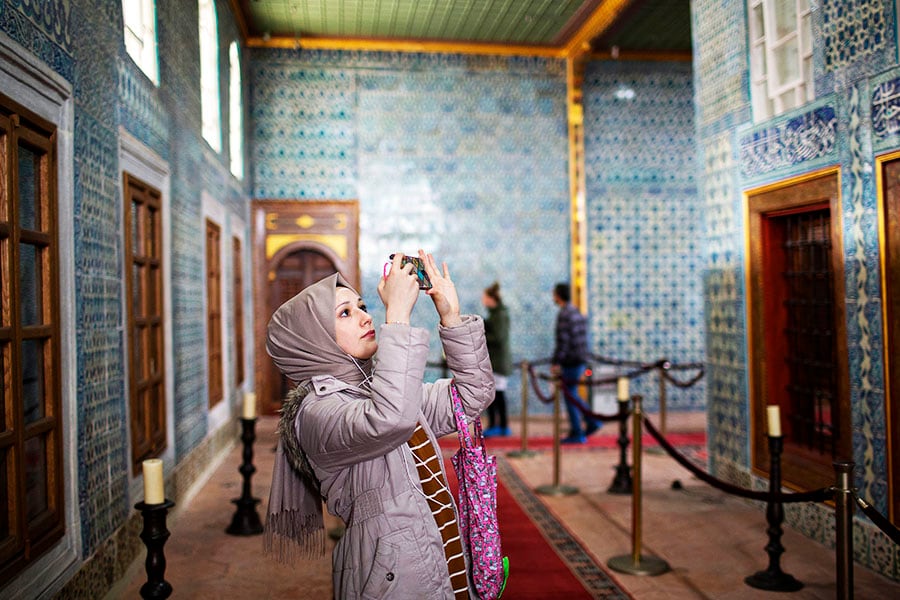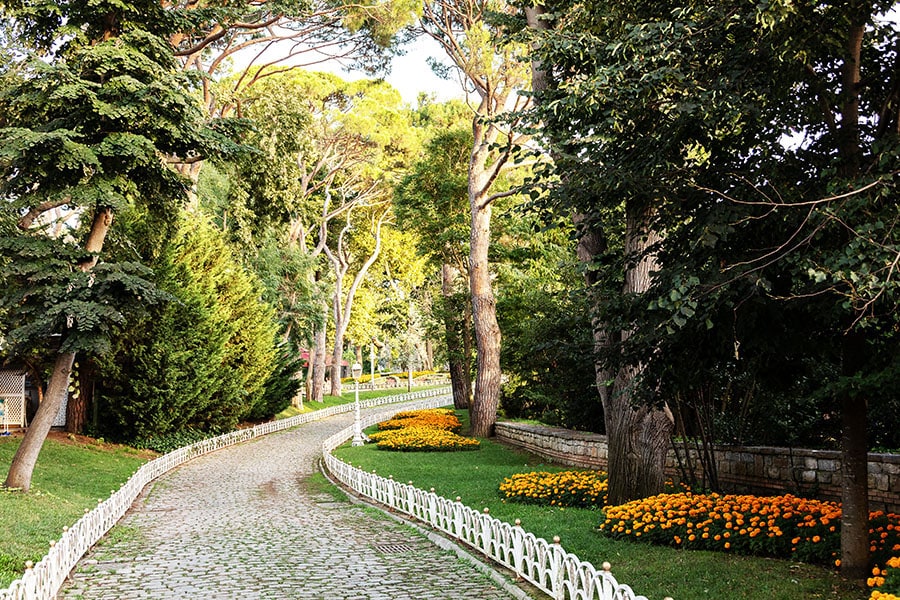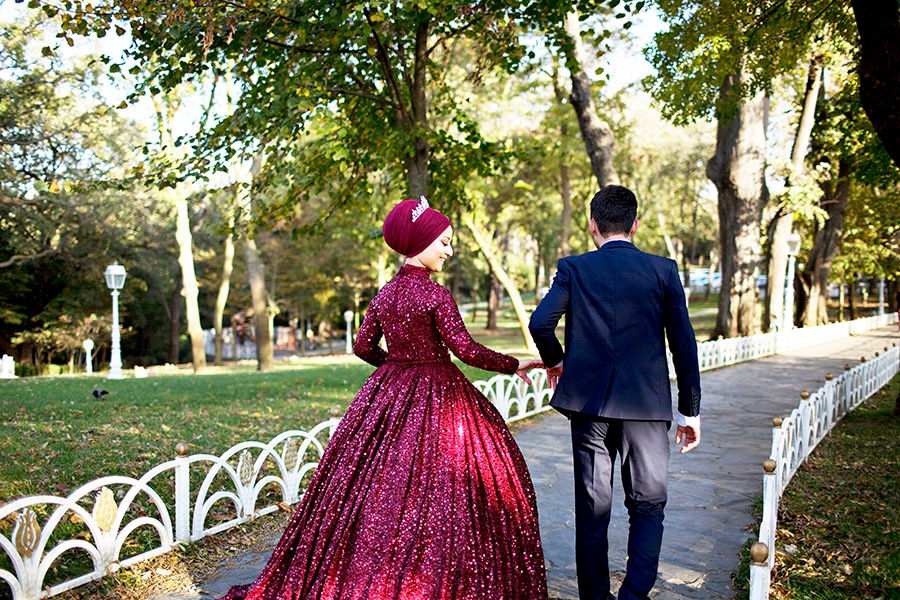
In Istanbul's private retreats of the Sultans, time stands still
In these exquisite kasir scattered around Istanbul, sultans could fantasize they were absolute masters of the Ottoman universe, shielded from upheaval and attempts to foment political discontent in their courts and territories. Today, these kasir exist as more than just historical monuments made of wood, stone and tile
 Ihlamur Kasri, near Beşiktaş in downtown Istanbul, Aug. 20, 2022. Ihlamur Kasri was originally part of a royal hunting ground. Image: Bradley Secker/The New York Times.
Ihlamur Kasri, near Beşiktaş in downtown Istanbul, Aug. 20, 2022. Ihlamur Kasri was originally part of a royal hunting ground. Image: Bradley Secker/The New York Times.
Inside one of the elegant pavilions known in Istanbul as a kasir, the clamor and chaos of big city life recedes. The noise of car horns and shouting vendors is replaced by near silence. Listen carefully for the imagined whisper of silk rustling in the breeze or the echo of a once vital conversation abruptly curtailed. In these discreet and sophisticated structures and summer palaces, built only for the sultans, time stands still. Ostensibly intended as private retreats away from the formality of the courts at Topkapi and Dolmabahçe palaces, in reality kasir were places to scheme and plot. Each is a snapshot of a particular moment in history and an intimate and enticing slice of Ottoman life.
In these exquisite kasir scattered around Istanbul, sultans could fantasize they were absolute masters of the Ottoman universe, shielded from upheaval and attempts to foment political discontent in their courts and territories. Today, these kasir exist as more than just historical monuments made of wood, stone and tile. They reflect the majesty and splendor, mystery and intrigue of a once mighty empire that held the world in thrall for more than 600 years. Here are three.
 A woman takes pictures in Hünkar Kasri in Istanbul in November 2019. All the walls at Hünkar Kasri are covered in rare and exquisite Iznik tiles from the 17th century, some specially created for this building. Image: Danielle Villasana/The New York Times
A woman takes pictures in Hünkar Kasri in Istanbul in November 2019. All the walls at Hünkar Kasri are covered in rare and exquisite Iznik tiles from the 17th century, some specially created for this building. Image: Danielle Villasana/The New York Times
Hünkar Kasri
It’s easy to walk straight past Hünkar Kasri in Eminönü on the Haliç (Golden Horn). Austere exterior walls and an unassuming entry give nothing away. The kasir is part of the Yeni Camii (New Mosque) complex Sultan Murat III ordered built at the request of his favorite concubine, Safiye Sultan, in the 16th century. Then as now Eminönü was a commercial center but it was a multicultural neighborhood largely inhabited by non-Muslims. Safiye Sultan wanted to Islamicize the area by building a mosque. The first stones were laid around 1597, but work stopped shortly afterward.
It started again in 1661 by order of Valide Turhan Sultan, the mother of Sultan Mehmet IV, who had been brought into the palace as a slave and eventually became the chief consort of one sultan, and mother of the next. As Valide Sultan, she oversaw the completion of the whole complex, which contained not only a mosque, but also a school, public fountains, a market and a tomb. It’s thought to be the first such complex ordered built by a woman. It opened in 1663 and was supposedly designed as a place to rest before or after prayers, or on special religious days.
©2019 New York Times News Service









